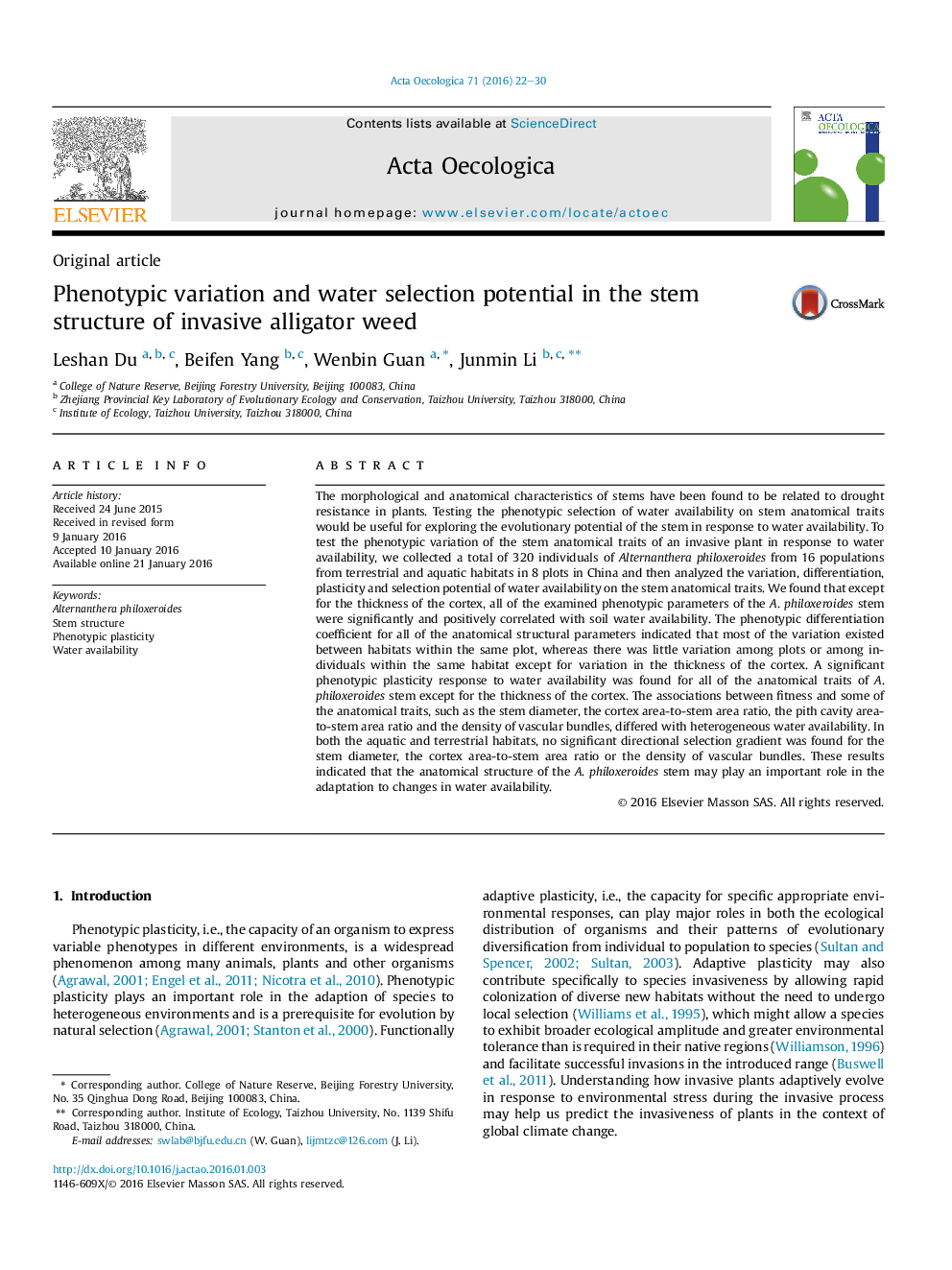| Article ID | Journal | Published Year | Pages | File Type |
|---|---|---|---|---|
| 4380732 | Acta Oecologica | 2016 | 9 Pages |
•Phenotypic parameters of the stem anatomical structure were significantly positively correlated with soil water availability.•Most of the variation existed between habitats in the same plot.•Phenotypic plasticity response to water availability was significant.•No significant directional selection gradient was found for phenotypic traits and ratios.
The morphological and anatomical characteristics of stems have been found to be related to drought resistance in plants. Testing the phenotypic selection of water availability on stem anatomical traits would be useful for exploring the evolutionary potential of the stem in response to water availability. To test the phenotypic variation of the stem anatomical traits of an invasive plant in response to water availability, we collected a total of 320 individuals of Alternanthera philoxeroides from 16 populations from terrestrial and aquatic habitats in 8 plots in China and then analyzed the variation, differentiation, plasticity and selection potential of water availability on the stem anatomical traits. We found that except for the thickness of the cortex, all of the examined phenotypic parameters of the A. philoxeroides stem were significantly and positively correlated with soil water availability. The phenotypic differentiation coefficient for all of the anatomical structural parameters indicated that most of the variation existed between habitats within the same plot, whereas there was little variation among plots or among individuals within the same habitat except for variation in the thickness of the cortex. A significant phenotypic plasticity response to water availability was found for all of the anatomical traits of A. philoxeroides stem except for the thickness of the cortex. The associations between fitness and some of the anatomical traits, such as the stem diameter, the cortex area-to-stem area ratio, the pith cavity area-to-stem area ratio and the density of vascular bundles, differed with heterogeneous water availability. In both the aquatic and terrestrial habitats, no significant directional selection gradient was found for the stem diameter, the cortex area-to-stem area ratio or the density of vascular bundles. These results indicated that the anatomical structure of the A. philoxeroides stem may play an important role in the adaptation to changes in water availability.
Graphical abstractFigure optionsDownload full-size imageDownload as PowerPoint slide
